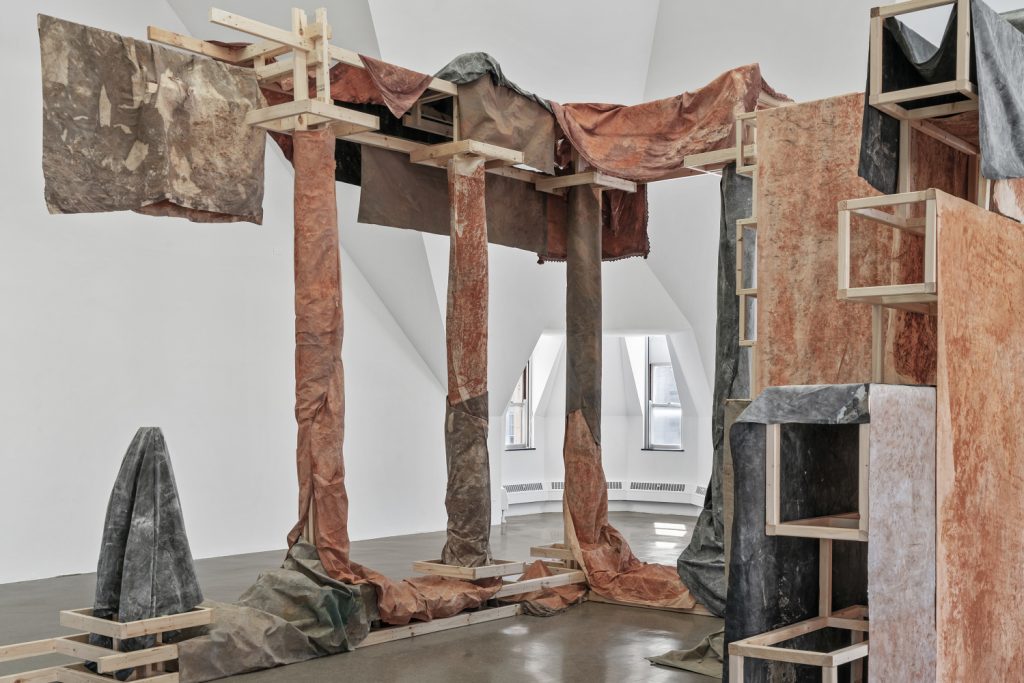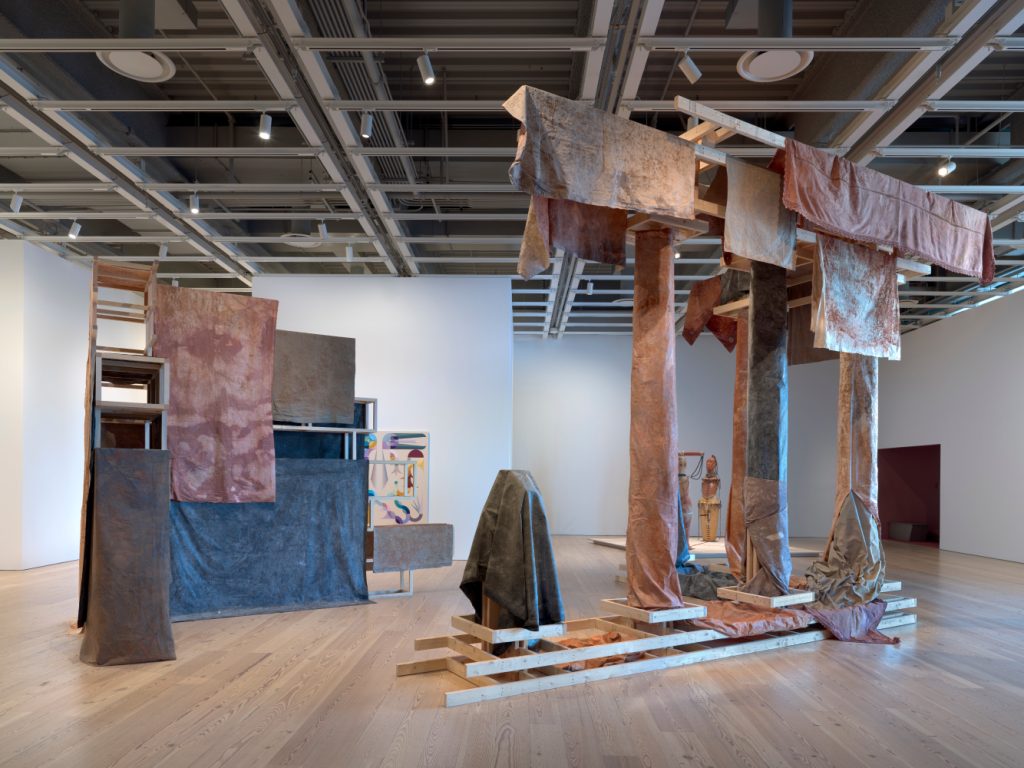As a rule, I tend to like installations and similarly large, sweeping artworks. I think artworks that are specifically intending to sweep in the entirety — or nearly the entirety — of the physical space that they occupy lean nicely into something that’s already there in the first place.
The space, from the museum or gallery as a whole to the arrangement on a wall and spatial relationship with other items in the room, communicates something. I noticed in a press release once from the New York City art gallery Francis Irv a discussion of the actual, physical space leading up to the gallery, including its history and present-day characteristics, casting these elements as instrumental in the experience of the artwork (by Reinhard Mucha). It was great.
“Adonis River” (2023) at the Whitney
And as part of this year’s Whitney Biennial, I encountered “Adonis River” (2023), a site-specific sculpture towards which artist Dala Nasser contributed essential work on another continent.
Broadly speaking, the architectural artwork — both quiet and commanding — was monumental. Nasser used plainspoken wooden bars to form its skeleton, creating what looked like a real-world, utilitarian piece of architecture from which some of the layers were removed.
The piece towered with enough force that you felt a swelling sense of import to its presence — but the full, potential sweep was cut off. The structure was less than wholly encompassing, and draped across the columns and indications of a foundation was a series of richly colored fabric pieces. The Whitney’s informational card identified cotton fabric, tablecloths, and bedsheets; Nasser utilized “iron-rich clay” from the Abraham River in Lebanon for some of the added color. The Whitney’s run-down also cited indigo and walnut shell dye.
You could imagine that the strong, assertive corners and serenely persistent, wooden bones of the overall artwork were indicative of, again, some real-world structure — that, with the sweeping cloth around the whole thing, was now viewed through an imprecise lens of memory. Specific residences and places of gathering define the physical contours of our entire lived experiences, even if some modern design trends seem concerned with fading those places of being into the background of our perception in favor of other gratification. But they’re there.
And like anything in life, they don’t last — and before even getting to death (and mourning, towards which Nasser’s artwork hearkens), it’s also a simple matter of memory. Even something as grand as a place of worship or communion is not immune from the sweeping erosion of memory’s relentless imprecision.

The Artwork’s Highly Evocative Forms
Nasser created an artwork so large it nearly touched the gallery ceiling, and besides its physical dimensions, she was also hearkening towards grand construction traditions behind large community gathering places. The wooden columns giving “Adonis River” its height are undeniably powerful, reaching towards the heavens or something specific up there. But that wasn’t where the piece ended. It also included smaller, wooden, structural outcroppings. One moved upwards like the rest of the columns but was short enough that I was looking down on it when standing amid the whole thing.
And I was struck by the stillness of it all. Even something with assertive form, created from a material (wood) we know to be so essential in society could seem… vulnerable. Quiet. Braced against imagined, incoming winds to its greatest potential and, from there, waiting.
The thing on the other side could be just about anything you can think of. This year’s Whitney Biennial as a whole dealt in significant part with the destruction of colonialism. On a different front, hurricanes and other natural disasters threaten to impose destruction regularly. And singularity — the presence of being — is, in fact, vulnerable: emotionally and in terms of, if your house is sitting there against a tidal wave of storm surge, that could be the end of it.
I appreciated the resonant, personal feel of Nasser’s piece. It took indications of a tradition of construction and worship (the structure pointed, to me, towards religion in its physical scale and direction) and looked inwards. The draped fabric blunted the rhythm of the structure, which started methodical and rigid before turning into restraint, quiet, serenity, and a chance at protection.
Because in an acute sense, destruction is not a foregone conclusion. And I liked the message of another artwork put up nearby. That piece, from artist Demian DinéYazhi’, insisted that “we must stop imagining destruction” and instead look towards “liberation.”
The biennial’s end date was August 11, though some of the wide-ranging exhibition’s art was set to remain on view through late September. Unfortunately, that doesn’t include Nasser’s piece.

Featured image: same as immediately above
You may also like
-
Diana Kurz at Lincoln Glenn in New York: A Review of a Shining Art Exhibition
-
Dustin Hodges at 15 Orient in New York City: An Ensnaring Exhibition at an Exciting Gallery
-
Maren Hassinger at Susan Inglett Gallery in New York: Reviewing an Uplifting Art Exhibition
-
Enzo Shalom at Bortolami in New York City: Reviewing an Entrancing Exhibition of Paintings
-
“Ben Werther: Townworld” at Amanita in New York City: Reviewing a Richly Memorable Art Exhibition